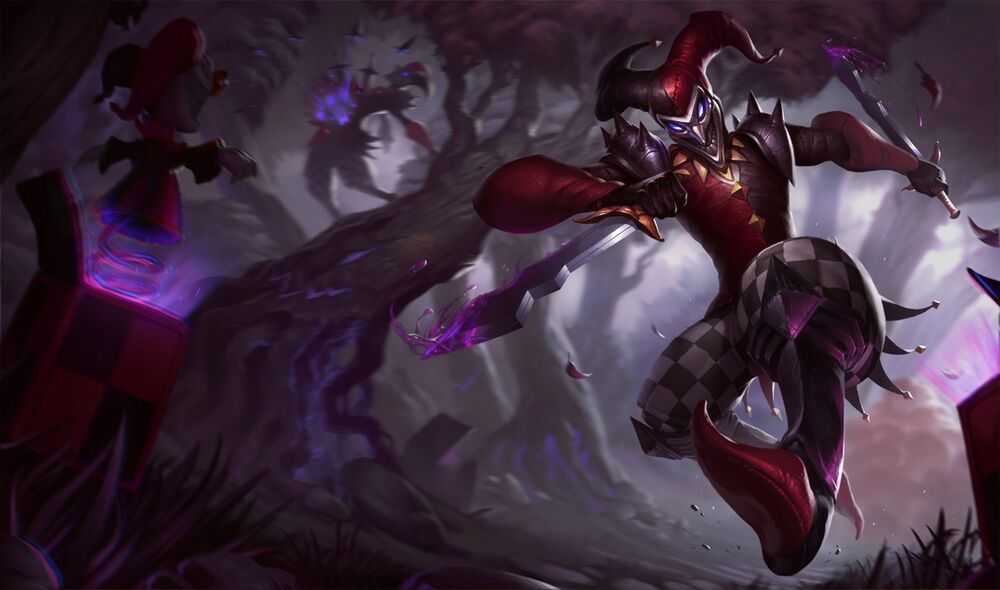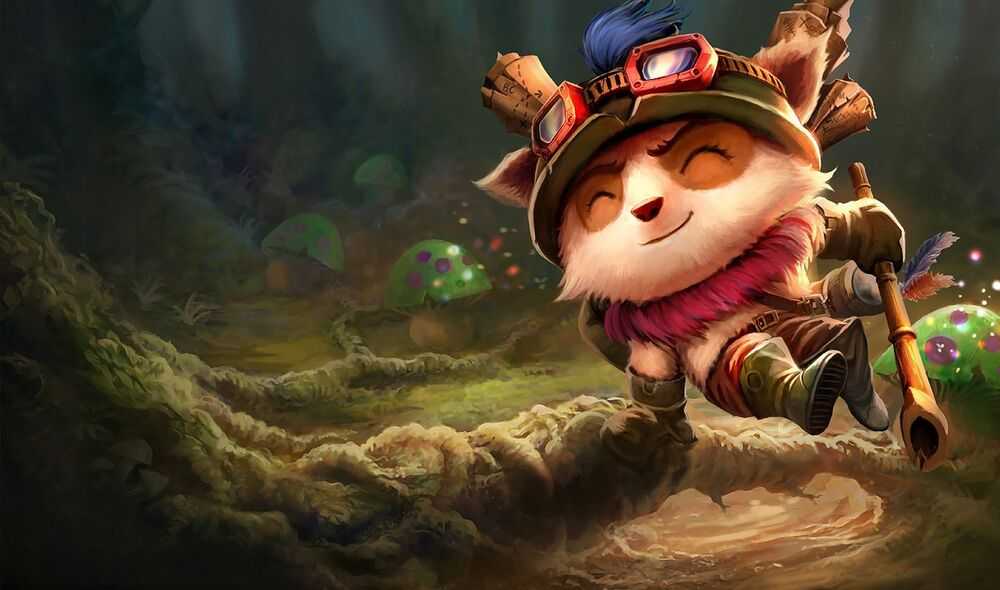Sneaking and Peeking - An Overview of Stealth and its Counters in League of Legends
Sneak a peek at this guide on the many forms of stealth in League of Legends!
Sneak a peek at this guide on the many forms of stealth in League of Legends!
Amongst the different game mechanics in League of Legends, stealth is perhaps the most frustrating to play against when you’re not familiar with how it works. Being one-shot by an opponent that you cannot see is never fun, and the in-game indicators regarding stealth are never quite helpful enough. The game offers no clear indicator of how Evelynn’s camouflage is different from Akali’s invisibility, but knowing the difference can mean surviving something that would otherwise take a massive chunk out of your health. This guide will outline stealth and its different forms, as well as how they are countered, so that you can hopefully win more games against sneaky enemies.
In short, stealth is any effect within League of Legends that makes a champion or unit unable to be seen unless they are revealed in a particular way. While how a unit can be revealed differs depending on the type of stealth, it is noteworthy that no unit is immune to being detected while they are within stealth, so it is always possible to counter these units in some way. Furthermore, while this might be obvious, taking any actions brings a unit out of stealth, so they cannot attack or use spells while remaining unseen. It is noteworthy that applying crowd control to a unit does not remove them from being in-stealth, save for the exception of taunting, which forces a unit to attack and thus forces it to also come out of stealth. One interesting thing about stealth that isn’t commonly known is that a unit who is in stealth is always ghosted, meaning that they ignore unit collision. This naturally means that hiding within a minion wave is less effective against stealthy champions, as they can just sift through it with ease. With this in mind, let’s look at the two different forms of stealth: camouflage and invisibility. Beyond that, some wards and traps can also have stealthy properties that are worth discussing.
Camouflage is the less common of the two main forms of stealth, and for a relatively good reason: it lasts for significantly longer than invisibility and is used in much different ways. In short, camouflaged champions tend to enter camouflage from well beyond the enemy’s range and use their sneakiness to surprise enemies or gain vision. A unit who is camouflaged has to be careful to not be revealed by enemy champions or wards, as camouflaged champions are visible to any enemy who is within a certain range of them. Furthermore, if a camouflaged champion steps within the vision range of a Control Ward, their position will be immediately revealed to the enemy team.
True Sight can also reveal a camouflaged champion, which means that they cannot sneak under enemy turrets and that certain champion abilities which reveal foes will disrupt their stealth. To balance these weaknesses out, a camouflaged unit is informed that they have been spotted via a pink exclamation point which appears above their head. Interestingly enough, champions who are camouflaged are not revealed when they take damage from an enemy skill; instead, they simply shimmer slightly as to indicate their location. Overall, camouflage is the more strategic form of stealth, as it isn’t terribly useful when in combat, but it allows champions to sneak around the map mostly undetected.

Example of a Champion who uses Camouflage: Evelynn is an excellent example of a champion who employs camouflage. Her passive, Demon Shade, means that she is constantly camouflaged after reaching level 6, and thus that she can sneak around the map without being seen. While she, like other camouflage-reliant champions, can be countered by purchasing Control Wards, Evelynn is able to leverage being indefinitely unseeable in order to flank and ambush enemies.
Other Noteworthy Examples: Pyke’s Ghostwater Dive, Rengar’s Thrill of the Hunt, Senna’s Curse of the Black Mist, Twitch’s Ambush, Viego’s Harrowed Path
Invisibility is distinctly more common than camouflage, in part due to the fact that any champion can become invisible if they secure a takedown while wielding a Duskblade of Draktharr. That being said, this ubiquity is counterbalanced by the fact that invisibility only ever lasts for a matter of seconds and is only truly usable in combat. However, this does not mean that invisibility is weak; far from that, invisibility is often an incredible tool for repositioning mid-fight and securing takedowns on high-value targets on the enemy team. Since invisibility is strongest during combat, it also comes with one major upside when compared against camouflage: an invisible unit can only be revealed by True Sight, and even when they are revealed, they remain in-stealth and are thus unable to be targeted by enemy abilities.
Similarly to camouflaged units, they also shimmer when damaged, so an enemy is able to know where a revealed invisible champion is for a fleeting moment if they deal damage to them. Therefore, it should be clear that while invisibility lasts for an incredibly short time when compared to camouflage, its potency cannot be ignored when it is used effectively within fights.

Example of a Champion who uses Invisibility: A good example of a champion who uses invisibility to reposition mid fight is Shaco. His Q, Deceive, allows him to blink a small distance and go invisible for several seconds, giving him the ability to reposition quickly and with ample amounts of sneakiness. Since Shaco’s passive makes him deal more damage when striking foes from behind, being able to get behind foes while remaining unseen is a core part of his gameplay. As a result, invisibility is a fundamental part of playing Shaco, and he is perhaps the champion who is most reliant on it.
Other Noteworthy Examples: Akali’s Twilight Shroud, Kai’sa’s Evolved Supercharge, Kha’zix’s Void Assault, Neeko’s Shapeshifter, Teemo’s Guerrilla Warfare, Vayne’s Final Hour, Wukong’s Warrior Trickster
While not champions themselves, wards and traps are placed by champions and some do rely on stealthy properties in order to be most effective. Wards and traps with stealth hide themselves from enemy vision so long as they are not revealed by a Control Ward, Oracle Lens, or other form of removal which allows the enemy team to disable and destroy them. Naturally, these wards and traps also expire over time, and traps are obviously destroyed whenever an enemy activates them by walking over them. Speaking specifically about stealthy traps, they often damage enemies who step on them, occasionally applying some form of crowd control or granting sight of the enemy. Both wards and traps are interesting in the sense that they counter stealth-based champions while utilizing stealth to their advantage; as might be obvious, a camouflaged champion who wants to traverse wide portions of the map and sneak behind enemy lines does not want to have their position revealed by a trap.

Example of a Champion-placed Stealth Trap: Perhaps the most iconic invisible trap in League of Legends is Teemo’s ultimate, Noxious Trap, which places stealthy mushrooms which explode when enemy champions or minions walk over them. While they can be revealed and disabled by an Oracle Lens or a Control Ward, they otherwise remain invisible to the enemy team. When exploded, they deal damage to, slow, reveal, and poison enemies, making them a prime example of the variety of afflictions that a trap can apply to enemies.
Other Noteworthy Examples: Shaco’s Jack in the Box, Jhin’s Captive Audience, Nidalee’s Bushwack
With all of this discussion around stealth, you might be wondering how you can best counter stealthy and sneaky champions in your own games of League of Legends. Aside from the aforementioned traps, let’s go over a handful of ways that you can effectively prevent yourself from being ambushed by a sneaky foe.
Control Wards are your best bet for ensuring that a camouflaged enemy cannot walk through the jungle and sneak up behind you for an assassination. By placing Control Wards defensively within your own jungle, you can ensure that enemies will not be able to get behind you without you noticing. If they still attempt to do so and force themselves to path around your Control Wards, you make them lose tempo and efficiency in the process, hopefully buying the rest of your team the time to make plays around the map.
Although it is something that many League of Legends players overlook, many abilities reveal foes on top of doing damage and applying crowd control effects. Take Lee Sin’s Q, Sonic Wave, as an example. Most players know that it is a projectile which deals damage and allows Lee Sin to dash to the target that it hits. What fewer know is that it actually reveals any targets hit, allowing Lee Sin to detect a target who is employing stealth. While this might not be incredibly useful against a target who is already unseeable, applying abilities like these to an enemy before they go into stealth-mode will allow you to know where they’re intending to go, impairing their ability to utilize stealth effectively.
Some champions are actually able to detect the presence of nearby unseeable enemies due to the fact that their abilities are only usable when a target is nearby. A prime example of this is Tryndamere and his W, Mocking Shout. This ability can only be used when an enemy is nearby but does not require that nearby enemy to be visible in order for Tryndamere to use it. As such, a Tryndamere player could detect an unseeable champion well before they are able to surprise them if they only looked at their abilities and noticed that their W was usable.
Perhaps the most easily applicable counter to stealthy champions is to just group up with your allies. Camouflaged and invisible champions thrive when against isolated targets, being able to sneak up on them and unload tons of damage without any of their target’s allies being able to retaliate afterwards. However, when there are five people clumped together in a group, a sneaky enemy is much less likely to get a kill then be able to just walk away. This ensures that even if one of your fragile teammates dies to someone employing stealth, you can get a revenge kill and bring the fight back to an even state.
From what has been said, it should be apparent that although stealth can be a confusing mechanic at first glance, it is relatively easy to understand once you break it into distinct categories. Knowing whether or not a champion is employing invisibility or camouflage can make a huge difference on how you approach fighting against them, and thus knowing which they are using is crucial for winning otherwise difficult matchups. As a result, if there is one key takeaway from this article, it is that knowing an enemy’s abilities and passives can give you a major upper-hand when fighting them in-game. Without this knowledge, it would be incredibly difficult to distinguish between the different types of stealth, as from afar the difference between invisibility and camouflage is negligible. Knowing which sneaky tactics your enemy plans on using can be the difference between playing at your peak and peeking at the defeat screen, so be vigilant in your research!